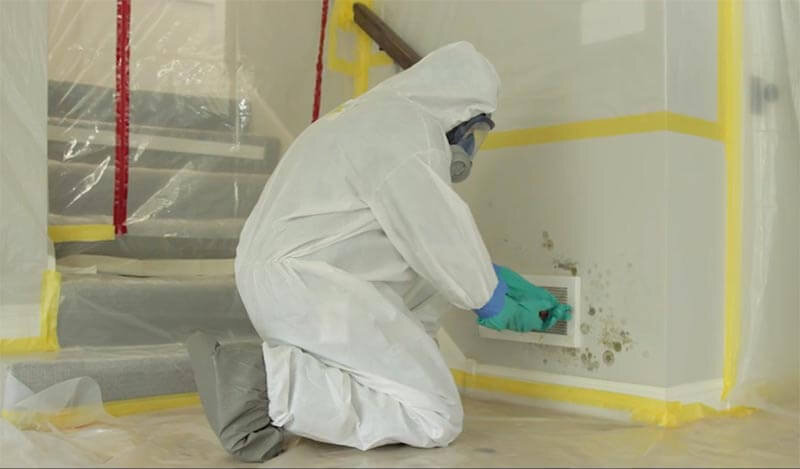Finding Post Remediation Inspection Near Me Providers
Effective Message Mold And Mildew Remediation Solutions for Your Home
Mold and mildew growth in homes can be a relentless problem, frequently calling for an organized approach for efficient post-remediation options. From comprehending the factors that contribute to mold development to executing proper cleaning techniques and dampness control procedures, the procedure can be elaborate yet crucial for preserving a healthy and balanced living setting. Post Mold remediation cleaning.
Recognizing Mold Growth Aspects
The main element contributing to mold growth is dampness. Mold and mildew spores need dampness to flourish and sprout, making moist or damp settings very prone to mold and mildew infestations.

Furthermore, air movement and light exposure can influence mold and mildew development. Areas that lack correct ventilation and all-natural light are extra vulnerable to mold and mildew development. By addressing these variables thoroughly, people can properly mitigate mold and mildew development and secure their living settings.
Appropriate Mold Cleaning Methods
Making use of reliable cleaning techniques is crucial in stopping the reoccurrence and resolving of mold contamination in interior environments. When dealing with mold, it is critical to focus on safety by using safety equipment such as gloves, safety glasses, and masks. The initial step in appropriate mold cleansing is to contain the damaged location to avoid the spread of spores to unpolluted locations. This can be achieved by sealing off the space and utilizing air scrubbers or negative air devices to maintain air top quality.

Executing Moisture Control Procedures
To efficiently avoid mold development and contamination in indoor settings, executing moisture control measures is critical. Moisture is the primary element that gas mold and mildew advancement, making it important to manage humidity levels within the home. One effective measure is to utilize dehumidifiers to maintain interior humidity levels below 60%. Furthermore, ensuring correct ventilation in locations susceptible to moisture buildup, such as kitchens and restrooms, can assist decrease the risk of mold growth. Frequently examining and repairing any kind of leaks in pipes, roof coverings, or windows is additionally necessary in stopping excess wetness accumulation. Making use of exhaust followers while food preparation or showering, and allowing air blood circulation by keeping furnishings somewhat away from wall surfaces can aid in moisture control. Making use of moisture-resistant products in high-humidity locations, such as mold-resistant drywall and paints, can be helpful. By vigilantly executing these moisture control procedures, house owners can properly decrease the chance of mold recontamination and maintain a healthy and balanced interior environment.
Utilizing All-natural Removal Solutions
After effectively carrying out dampness official statement control procedures to prevent mold growth in indoor settings, homeowners can currently check out the effectiveness of all-natural remediation remedies in keeping a healthy and balanced space. Natural remediation solutions use environmentally pleasant techniques to deal with mold and mildew and mold, making them a popular option for those looking for safe alternatives. One such option is making use of vinegar, an all-natural antimicrobial agent, to clean and disinfect surfaces contaminated by mold and mildew. Simply thin down vinegar with water and spray it onto the affected locations, permitting it to sit for a few hours prior to wiping clean. Additionally, tea tree oil, understood for its antifungal properties, can be blended with water and splashed onto mold-infested surface areas to inhibit further growth. Another natural option is hydrogen peroxide, which can efficiently kill mold and mildew on various surfaces without leaving dangerous residues behind. By integrating these all-natural removal options right into their cleansing regimens, property owners can effectively deal with mold and mildew growth while promoting a healthier interior setting for themselves and their households.

Keeping a Mold-Free Environment
In order to stop mold reappearance and ensure a consistently mold-free atmosphere, it is necessary for homeowners to apply proactive upkeep techniques. Regularly inspecting areas susceptible to mold growth, such as shower rooms, kitchens, basements, and attic rooms, is crucial. Addressing any leakages, water damages, or excess dampness promptly can considerably reduce the threat of mold and mildew growth. what to do after mold remediation. Appropriate ventilation in locations with high humidity levels is also key to avoid mold growth. Utilizing dehumidifiers or exhaust followers this content can aid maintain optimal moisture degrees and prevent mold spores from prospering.
Furthermore, maintaining sanitation in the home is vital for mold prevention. Maintaining interior plants in check and guaranteeing appropriate drain in outside landscape design can reduce dampness build-up, minimizing the likelihood of mold problems.
Conclusion
Finally, it is vital to deal with mold and mildew growth variables, utilize appropriate cleansing methods, carry out moisture control actions, make use of natural remediation options, and maintain a mold-free environment in order to properly handle message mold and mildew remediation in your house - Post remediation mold testing near me. By complying with these methods, you can stop mold from repeating and make sure a healthy and balanced living setting for you and your family
The key variable contributing to mold and mildew growth is wetness. Mold and mildew spores require wetness to flourish and germinate, making moist or damp atmospheres very at risk to mold and mildew infestations.To effectively this link prevent mold and mildew development and contamination in indoor atmospheres, applying moisture control steps is extremely important. Furthermore, ensuring proper ventilation in areas vulnerable to moisture buildup, such as bathrooms and cooking areas, can help reduce the risk of mold development.After effectively implementing dampness control steps to prevent mold and mildew development in indoor atmospheres, home owners can now discover the efficiency of natural removal solutions in keeping a healthy and balanced living room.